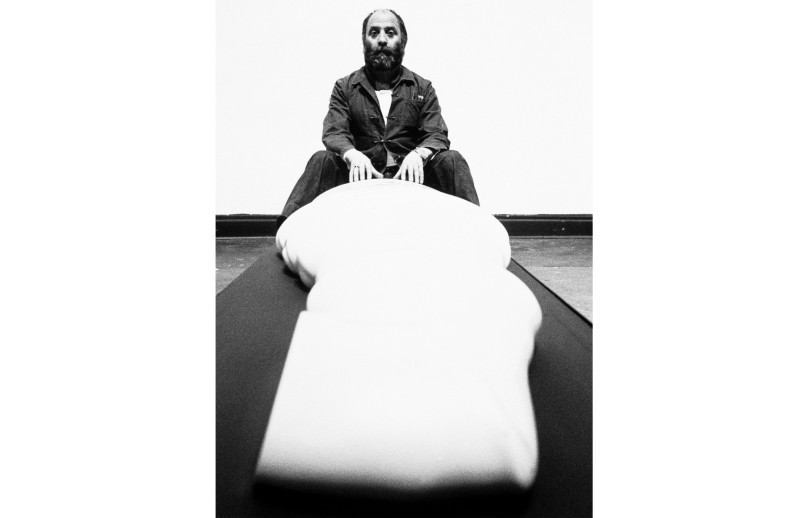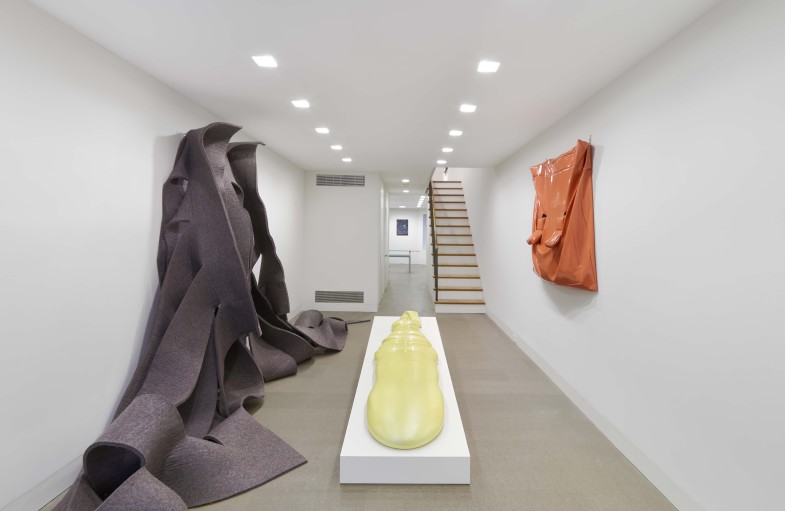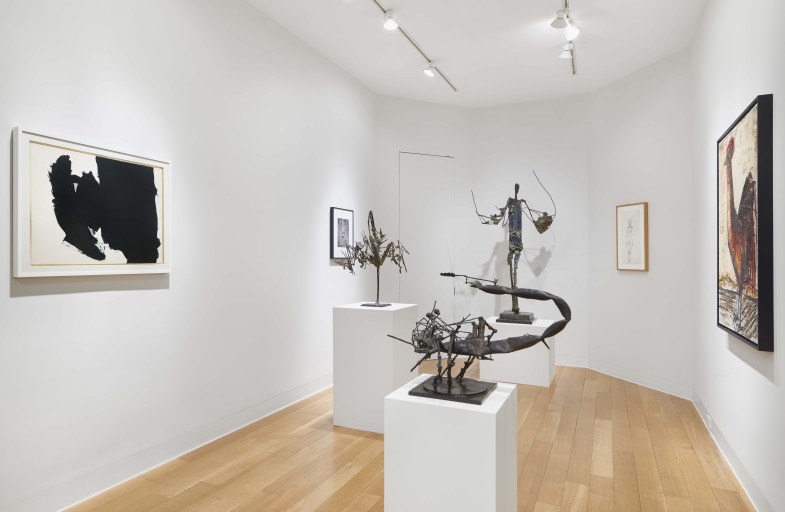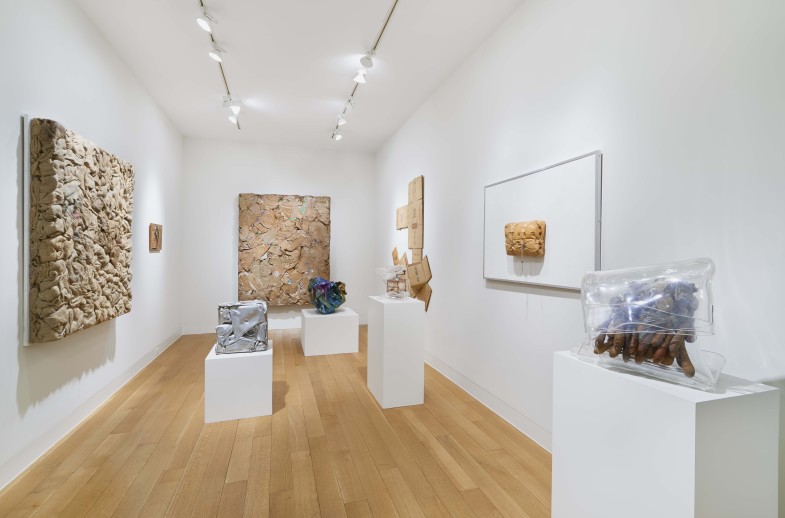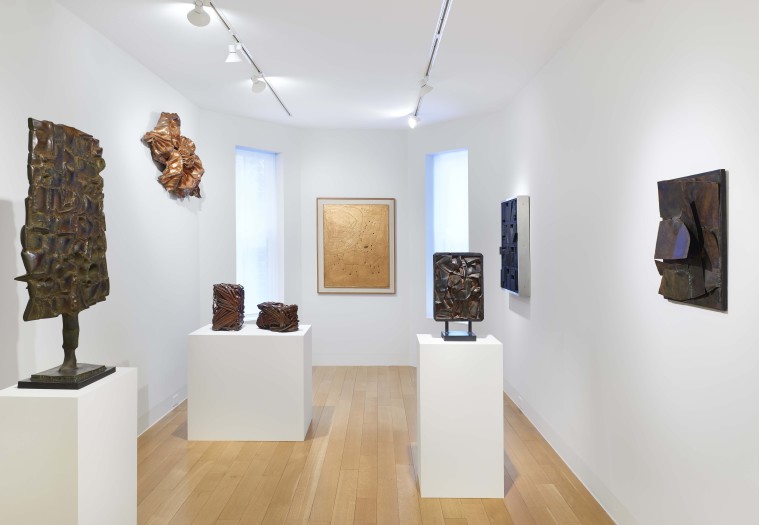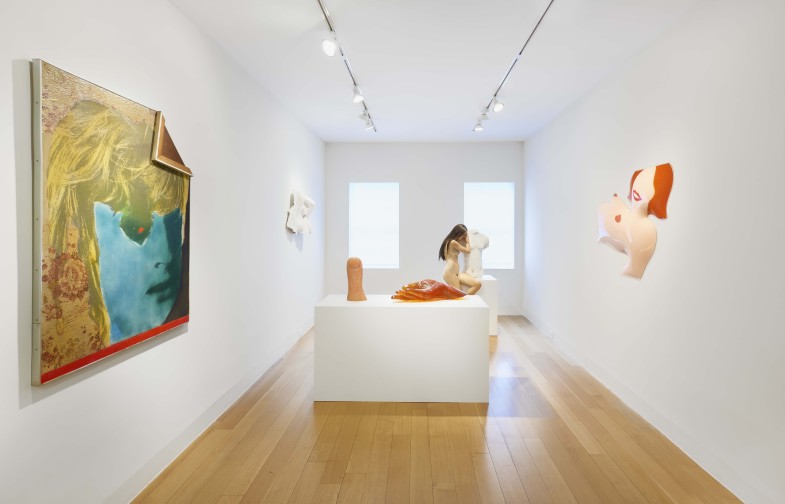Luxembourg & Dayan will present César in Context, an exhibition organized to celebrate the radically inventive and mutable practice of renowned French artist César (1921-1998). By placing a group of his key works in juxtaposition with contemporaneous masterpieces by American and European peers, the show draws attention to the most powerful tool of the artist’s practice: a lifelong penchant for experimentation with an ever-expanding arsenal of materials and techniques. Works on view trace the development of César’s oeuvre through his accumulated language of breakthroughs, which placed him not only within Nouveau Réalisme with which he is most often associated, but also in league with such postwar art movements as Arte Povera, Neo-Dada, and Pop Art.
On view through July 2, César in Context presents sculptures by the artist in conversation with works by Lynda Benglis, Bram Bogart, Brassaï, Bernard Buffet, Alberto Burri, John Chamberlain, John de Andrea, Lucio Fontana, Alberto Giacometti, Piero Manzoni, Robert Morris, Robert Motherwell, Louise Nevelson, Claes Oldenburg, Robert Rauschenberg, Martial Raysse, George Segal, and Tom Wesselmann.
César in Context has been organized with the support of Fondation César and its Chairman and President Stéphanie Busuttil-Janssen. The exhibition, which will be accompanied by a new publication, provides New York audiences with a foretaste of the major César retrospective scheduled to open at the Centre Georges Pompidou in Paris in late 2017.
Born César Baldaccini in 1921 in Marseille, France, César achieved recognition for a sculptural practice propelled by his ceaseless fascination with the inherent properties of materials. Moving restlessly through experimental phases, he manipulated a range of unexpected mediums through technological intervention. César in Context comprises a sequence of spotlights, focusing and expanding upon the formal themes recurrent in César’s work from the 1950s through the 1990s, with each room highlighting a distinctive sculptural series. From room to room, visitors will see examples from the polyurethane foam Expansions; the figural bronze Insects, Men, Drawers, and Plaques; the compacted Compression series using materials as diverse as jute sacks, oil barrels, and copper wires; the Envelope series of objects wrapped in manipulated and distorted sheets of Plexiglass; and the Human Imprint series of cast body parts scaled proportionally with the help of the pantograph. Within each of these groupings, works by peers are exhibited to place in high relief the relevance and contemporaneity of the concerns that motived César.
César’s experiments with the potentials of expanded polyurethane foam, for example, are echoed in the cascading forms of Robert Morris’s felt works, Claes Oldenburg’s soft sculpture, and the highly textured paintings of Dutch-born Belgian artist Bram Bogart. Meanwhile, his bronze Insects (cast from his earlier 1950s iron sculptures) stand as sculptural counterparts to Bernard Buffet’s Le Coq Rouge (1959), which depicts a rooster in the artist’s recognizably brutalist style. Brassaï’s Graffiti photograph (1933-1956) of a man’s head carved into a hard surface finds its companion in César’s Claire ou Homme qui marche (1954/1997).
Beginning in the 1960s, César began to experiment with the Compressions that would have a defining role in his practice – in an ever-evolving range of materials and sizes – for the rest of his life. At Luxembourg & Dayan, a selection of the Compressions will be juxtaposed with works in which the artist’s contemporaries employed identical materials. Among these objects are Robert Rauschenberg’s cardboard work French Fried/Captiva Tile (Cardboard) (1971), Alberto Burri’s Sacco (1954), and John Chamberlain’s crushed metal sculpture Asarabaca (1973).
César’s Envelopes appear in the exhibition with a contemporaneous work by Piero Manzoni, who was similarly preoccupied with the process of veiling and wrapping. In these works, found everyday objects have been stripped of their commercial or symbolic value, negating their utility and concealing their identity to capture the surprisingly enigmatic nature of the quotidian.
César’s exploration of metal through casting and compression is paralleled by Lynda Benglis and Alberto Burri’s similar investigations. The reflective and sometimes harsh nature of metal, combined with its connotations of technological progress in the postwar period, made it a material of interest among sculptors and painters alike.
In the final room of the exhibition, visitors will see works from César’s Human Imprints series -- casts of body parts that resonate with the hyperrealism of neighboring works by American artists John de Andrea and George Segal. However, César’s iconic Thumb (1966) and Main (1968) simultaneously tie his work to the French artist Martial Raysse and to American Pop artist Tom Wesselmann, who similarly exaggerated and played with the human figure.

